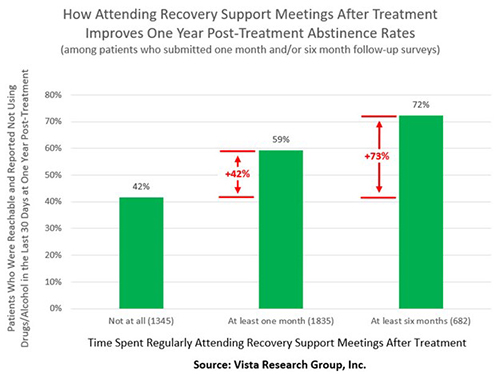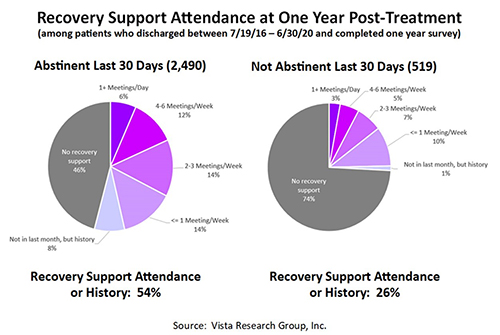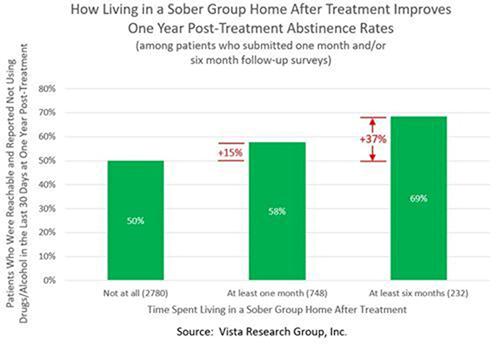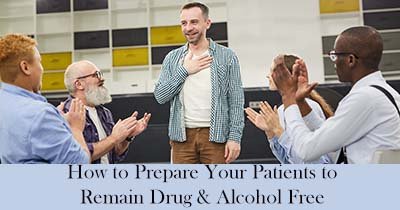
You’ve been working closely with your patient to address his or her cravings and co-occurring disorders, and they now have a number of weeks of sobriety under their belt. With some trepidation, your patient is starting to prepare to return to “the real world”. Is your job done?
Unfortunately not. As we all know too well, leaving treatment is a very dangerous time. Among patients in Vista’s research who admitted relapsing at any time during their first post-treatment year, 15% reported relapsing in the first few days and 34% in the first month. And the prevalence of fentanyl in today’s street drugs has drastically increased the risk that a single use will prove fatal.
Your patient’s ability to remain abstinent after treatment will be strongly affected by the after-care choices they make. Two things they can do have proven to be particularly effective – attending recovery support meetings and moving into a sober group home after treatment.
Attending Recovery Support Meetings
Connecting your patients to one or more recovery support meetings that they enjoy attending and where they can develop supportive peer relationships can have a huge impact on whether they succeed in meeting their drug and alcohol use goals.
Among patients who submitted outcomes surveys at one or six months post-treatment, only 42% who reported not attending recovery support meetings in the first months after discharge were reachable and abstinent at one year. By comparison, 59% who said they attended recovery support meetings for at least a month and 72% who attended recovery support meetings for at least six months were reachable and abstinent one year after discharge:

Looked at another way, of all the patients who reported not using drugs or alcohol at one year post-treatment, 46% were still regularly attending recovery support meetings and another 8% had done so regularly in the past. By comparison, only 26% of the patients who reported recently using drugs or alcohol at one year post-treatment were either attending or had a history of attending recovery support meetings:

While it is, of course, possible to achieve long-term recovery without 12-step involvement, the data is clear that recovery support communities such as Alcoholics Anonymous, Narcotics Anonymous or SMART Recovery can be tremendously helpful.
Living in a Sober Living Group Home
Another option that has been shown to substantially improve abstinence rates is living in a sober group home after treatment. Patients who lived in a sober group home for at least the first month after discharge were 15% more likely to be in recovery at one year than those who did not. And patients who lived in a sober home for six months were 37% more likely to be abstinent at one year post-treatment compared to those who didn’t:

Since we know that a patient’s ability to remain abstinent is directly related to their length of time in treatment, moving directly into a sober living home is likely to be particularly important for patients leaving short-term residential treatment.




